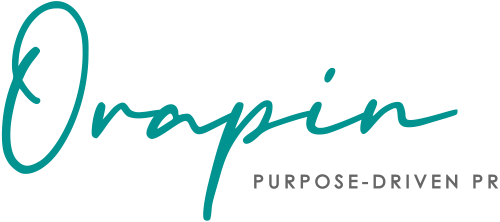![]()
![]()
 Last month we discussed the components of the PESO model and the importance of integrating multiple strategies into your communications plan to elevate your brand’s story. This month, we’re revealing best practices to create content for each of the PESO components so you can fully share your brand’s mission and purpose.
Last month we discussed the components of the PESO model and the importance of integrating multiple strategies into your communications plan to elevate your brand’s story. This month, we’re revealing best practices to create content for each of the PESO components so you can fully share your brand’s mission and purpose.
PAID MEDIA
- To invest in paid media opportunities you must first identify the most relevant and important communication channels to your target audience.
- If a majority of your audience finds your brand’s products or services through search engines, perform keyword research to discover what search terms your business is most relevant for and use those terms to inform your advertising messages.
- If you know most of your audiences use more traditional media to purchase your products or services, television or radio advertising may be the way to go.
- If social media is the place to “buy” see Facebook’s Ad Guide and Twitter’s Ad Guide to get started.
- Once you identify where you want to advertise (and it may be all three of the above channels), it’s time to create your ad. Regardless of the kind of ad you create, remember to keep the content true to your brand. People don’t like to be “sold” (even though that’s what ads intend to do); instead, tell a simple yet powerful story that ends with a call to action (CTA). For example, if you’re hosting a fundraising event and want your audience to attend and donate, tell people why they should donate and where they’re money is going, and include a CTA to “donate today.”
- Creating the actual ad depends on the channel you select. There are plenty of resources available online to help you navigate effective search ad campaigns including this one from HubSpot. Television and radio tend to have in-house creative departments thatcan work with your organization to identify appropriate visuals and messages to appeal to your audience. If you’re looking at social media advertising, our friends at Social Media Examiner have some great ideas to get you started with an effective Facebook campaign.
EARNED MEDIA
Remember, earned media is unpaid coverage of your company or organization cultivated from strong relationships with reporters, editors, bloggers and community influencers.
- To kickstart your earned media initiative, you need to identify the top media outlets where your audiences go to learn more about companies like yours. By understanding where your audience goes to get their “news” about other orgs like yours, you can understand the types of stories they like to read about and therefore, be more effective at creating stories they care about.
- Once you’ve created a media list, you need to do some research on those outlets and the people who write for them. What topics and stories do they cover most? Where do you see opportunity to contribute to their editorial lineup? What stories haven’t they reported on yet?
- Then ask: What’s new, surprising or different about your company, your perspective and your business approach that reporters may find intriguing? How is your business relevant to today’s issues and industry changes? And, equally important: Why should anyone care? Answering some of these questions will help you develop story angles so you can pitch the appropriate reporter, blogger or editor your ideas. We’ve got a few tips on how to evaluate your business’ “newsworthiness.”
Following these steps will help you craft the right story for the right reporter at the right time. Keep pursuing media coverage of your business because, as we like to say “once you put the microphone down, someone else picks it up.”
SOCIAL MEDIA
Creating content for social media doesn’t have to be a chore – nor should it be! If you’re regularly blogging (and you should be), contributing articles to industry outlets, securing media coverage, hosting events, etc. you should have a strong inventory of content to fill your social media pipeline.
- Remember, social media is all about being social – so engage with your fans and insert yourself into the conversation. Identify industry forums on LinkedIn to discuss the latest issues and business challenges; join Facebook groups to build a community following; and comment/share partner posts to extend the reach of your network.
- Graphic creation tools like Canva, Rhonna, Ripl, and WordSwag all help you “design” stunning images and video snippets without needing a professional degree in graphic design or video editing.
- Don’t be afraid to experiment with features like Facebook Live as well – video gets much more engagement than standard images or text-based posts. Facebook Live works well to capture real-time happenings of events, speaking gigs, and more.
Social media content doesn’t have to be a long blog post – it can be almost anything! A video, an image, a quote, an article you wrote, etc.
OWNED MEDIA
This is content that originates directly from your organization: blog posts, customer testimonials, employee stories, reviews, your website, videos and podcasts. We’ve already spent a good deal of this article discussing how owned media integrates and informs other components of the PESO model.
To create your own media, try some of the following content creation tools and strategies:
- Blog topic generators from HubSpot, Portent, and Content Ideator can help you develop catchy headlines and titles that people will want to read.
- If you’re stuck with what to write about, start by writing – anything. What’s been on your mind lately as it relates to work? Maybe there’s a challenge internally you’re trying to solve in a new leadership role. Maybe you’re struggling to find time to spend with your family. Or maybe your team is getting burnt out. You’ve got potentially three blog topics or social media posts right there: The top 5 common challenges of a CEO; Why it’s important to have a strong work/life balance; and How to avoid employee burnout.
- Research what your competitors are doing to create their owned media. Check out their blogs, videos, social media channels and news sections of their website to gauge activity level and identify gaps your business can fill.
Sometimes, working with an outside agency can help you gain a much-needed third-party perspective and help you understand best ways to develop owned media.
If you’re able to develop a system in which all of these initiatives occur, you should be able to start seeing how one strategy informs and fuels the other. As we mentioned before, not one of these strategies alone will help elevate your brand and story for long-term growth. It requires a creative mix of paid, earned, shared and owned media content to successfully reach audiences on their terms, where they are. And now, you have some tools and recommendations to get you started!

Rhiannon Hendrickson is the founder and CEO of Orapin, which helps purpose-driven organizations transform their random acts of PR into a strategic, consistent approach that generates greater awareness and impact. She has worked with organizations of all sizes across myriad industries and causes to develop earned media and thought leadership programs that generate awareness, engagement, and, ultimately, support for those that are making a meaningful impact.
